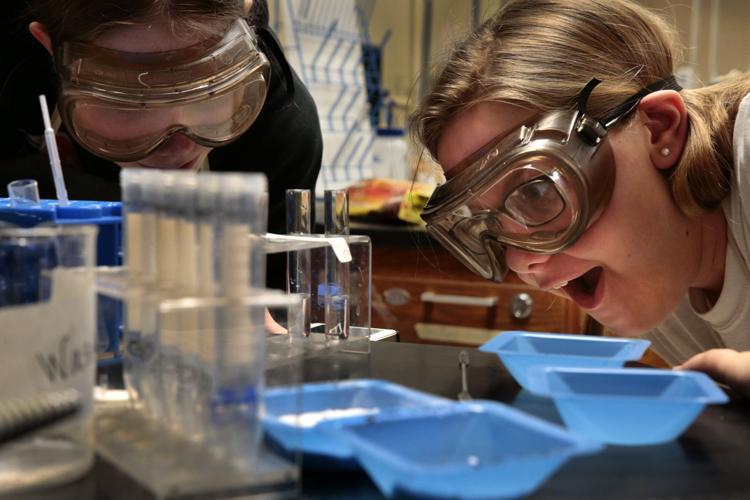The number of Missouri students taking Advanced Placement exams continues to rise, but not all the students taking them are benefiting equally.
Last school year, 26,701 Missouri students took a total of 44,429 AP exams. That was up from 25,610 students the year before and more than double the number of a decade before, by the College Board, the nonprofit that runs the AP programs.
AP courses are billed as rigorous, college-level courses for which students may receive college credit, depending on how well they score on a final test. Scores range from 1 to 5, with colleges generally requiring a 3 or better to receive credit.
People are also reading…
About 12.1 percent of Missouri public high school graduates took an AP exam last year and scored a 3 or higher, up from 11.4 percent the year before. That ranks Missouri 43rd among states.
Missouri public high schools have an incentive to offer AP, and to have their students pass them, because they can earn points on their state-issued annual performance reports for the percentage of graduates who earn a 3 or higher on an AP exam.
But in the midst of this expansion, Missouri is leaving behind black students. Just 25.5 percent of black students’ scores were a 3 or higher, compared to a statewide average of 63.9 percent. Black students also had the lowest mean score, 1.92, while white and Asian students tallied average AP exam scores higher than the state mean, which was 3.02. Black students took 3,284 AP exams, compared to white students who took 31,970 exams and Asian students who took 3,690 exams.
“Regardless of what score a student might achieve on an AP exam, taking a course that offers advanced rigor like an AP course still provides you a solid background to do better in a college setting,” said David Welch, director of gifted education programs at the Missouri Department of Elementary and Secondary Education.
Welch said that, regardless of race or socioeconomic status, students need to be given chances to take rigorous coursework in middle school leading up to high school AP courses in order to succeed.
To do this, it’s common for area public schools to offer “pre-AP” classes, which offer advanced coursework for freshmen and sophomores to prepare for the rigor of AP. For example, Ritenour High School AP Chemistry teacher Heather Bonner noticed an uptick in start-of-year enrollment in her class because more students were taking the pre-AP class. Ritenour also started offering an honors study hall last school year, during which AP students can consult an AP teacher for help with schoolwork.
the AP course access and achievement gap for black students specifically.
Welch said he thinks fewer students take and pass AP exams in Missouri than in other states partly because many public high schools are small and rural. Small and remote schools are less likely to be able to secure teachers with the expertise needed to offer an AP course, especially if it ends up being only for a few interested students, he said. The number of Missouri public and private high schools with a student who took an AP exam fell to 333 in 2017 from 342 the year before. The state has about 560 public high schools.
“We are not one of those states where we have a lot of students who take AP courses,” Welch said.
Cost could also be playing a role. Missouri no longer subsidizes AP exams after the federal government for them for 2017. The exams now cost $94 each, or $53 for qualifying low-income students who request a reduced fee.
Three years ago, the Fox School District in Arnold began an effort to increase the number of students taking AP exams by offering to reimburse exam fees if students score a 3 or higher. The number of Fox students taking AP exams grew to 381 students in 2017 from 227 students in 2015.
“We find this is another good way to promote our AP program,” said Nisha Patel, Fox’s assistant superintendent for secondary schools.
Missouri education officials also stress that some students prefer to take dual credit courses, which are college courses that high school students can enroll in through a partnership between a college and a public school system, rather than take AP exams. Others may enroll at a local college while still in high school. Some schools allow students to receive dual credit through an AP course.
Unlike AP, guarantee students that they will earn college credit if they pass the courses. However, dual credit and dual enrollment only apply to Missouri colleges. Last year, 415 districts and charter schools with high schools offered dual credit; about 140 offered dual enrollment.












